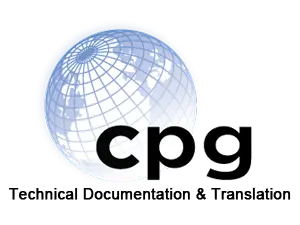
Clear and well-structured technical manuals are essential for any product or system. They guide users through installation, operation, maintenance, and troubleshooting. Good documentation reduces service calls, improves safety, and ensures compliance with regulatory standards.
Whether you are building a manual orcatalog, strong documentation enhances your product and brand.
What Is a Technical Manual?
A technical manual is a written document that explains how to use, maintain, and service a product or system. It provides step-by-step instructions, specifications, diagrams, and procedures.
Common Types of Manuals
-
Owner’s Manuals
-
Operator Manuals
-
Service Manuals
-
Parts Manuals
-
Installation Guides
Each serves a specific audience, from end users to certified technicians.
Benefits of Writing Effective Technical Manuals
-
Reduces user errors
-
Minimizes warranty claims
-
Supports training and onboarding
-
Increases safety and compliance
-
Enhances overall user experience
Companies that invest in professional manuals save time and money in the long run.
Core Elements of a Technical Manual
Title Page
Includes product name, model, version, and publishing date.
Table of Contents
Allows readers to quickly find the section they need.
Safety Information
Outlines hazards, warnings, and safety precautions.
Specifications
Covers technical data, operating conditions, and limitations.
Instructions
Step-by-step directions for installation, use, maintenance, or service.
Diagrams and Illustrations
Visual aids that support written content and clarify complex steps.
Troubleshooting Section
Lists common issues and solutions.
Parts List
Detailed breakdown of parts with names, numbers, and placement diagrams.
How to Write a Technical Manual
Step 1: Understand the Product
Learn everything about the product or system. Talk with engineers and technical staff. Review CAD files, schematics, and prototypes if available.
Step 2: Know Your Audience
Tailor the language and detail level to the reader. A technician will need different instructions than a general user.
Step 3: Organize Content Logically
Group related topics together. Begin with basic use and move toward more advanced procedures.
Step 4: Use Clear and Simple Language
Avoid vague terms. Be direct. Use verbs like “press,” “install,” or “connect” to guide the reader.
Step 5: Create Consistent Formatting
Use headers, bullet points, and numbered lists. Keep fonts and spacing uniform.
Step 6: Add Visuals
Support instructions with photos, diagrams, or exploded views. Every step should be easy to follow visually.
Step 7: Review and Edit
Check for accuracy, grammar, and consistency. Have the manual reviewed by a subject matter expert.
Sample Technical Manual Layout
| Section | Description |
|---|---|
| Cover Page | Product name, model number, version, and logo |
| Introduction | Purpose and scope of the manual |
| Safety Warnings | Compliance and safety information |
| Specifications | Dimensions, power, materials, tolerances |
| Installation Guide | Setup and assembly instructions |
| Operating Instructions | How to start, stop, and operate the product |
| Maintenance | Scheduled maintenance and upkeep tips |
| Troubleshooting | Common issues and how to resolve them |
| Parts List | All replaceable parts with diagrams |
| Service Instructions | Step-by-step service procedures |
Service Manual Writing and Design
If your team lacks the time or resources to write manuals internally, service manual writing can be handled by professionals. Experts in technical communication ensure your manual is accurate, complete, and user-friendly.
Service Manual Design
Effective service manual design enhances readability and usability. Structured layouts, labeled diagrams, and visual consistency help users navigate complex information with ease.
Manual Writing Services for Manufacturers and Service Providers
Professional manual writing services deliver clear, compliant, and well-organized documents. These services are especially helpful for:
-
Original equipment manufacturers
-
Consumer product companies
-
Automotive and heavy equipment providers
-
Medical device manufacturers
-
Industrial machinery suppliers
Manual writing professionals translate complex product details into clear user instructions.
Final Thoughts
Writing a great technical manual is about delivering information clearly and efficiently. Each section must be easy to follow, accurate, and well-structured. Whether you are creating documentation for new products or updating legacy manuals, consistency and clarity are key.
If you need support, consider partnering with professionals who specialize in technical documentation. From service manual writing to manual writing services, the right team can streamline your documentation process and help your product stand out.
Back To News
 800-541-8270
800-541-8270